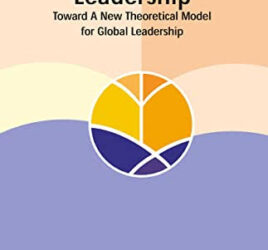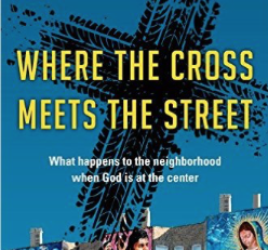In their book, To Transform a City, author Eric Swanson and co-author Sam Williams aim to help the reader to “understand how to think about cities” (Swanson & Williams, 2010). Written at a strategic level, the authors present the big ideas and ideals of city transformation. Examples, illustrations and charts are given to inspire the reader to implement these lessons learned in their own city environment. Any person interested in taking the whole gospel through the whole church to the whole city would benefit from not only reading, but also implementing, this book.
Swanson introduces the book with the story of a small group of Christian leaders praying for the city of Boulder, Colorado. Having met several times, they struggled to define the goal and vision of their efforts. Some months later, the group’s leader suddenly received their mission wrapped in two words only, “Love Boulder.” This simple but profound statement instigated a movement that unified pastors and churches to be a true blessing to city government, nonprofit organizations, and the people of Boulder city.
With over half the world’s population urbanized, it is important for Christians to understand and have a vision for cities. Swanson provides a brief overview and definition of cities before presenting six reasons why churches need to be engaged. He then discusses community transformation, applying it to the city, and challenging the church to set a new standard.
Drawing upon an example in West Africa, Swanson proves that nations such as Ghana can become so called “Christian” with a majority of the population attending churches, yet not be transformed in culture, thought and behavior. “Community transformation is not about ‘Christendom,’” says Swanson (2010). It is not about trying to make converts and positioning the church as the center of society. Although conversion “is our ultimate motive, [it is] not our ulterior motive in loving and serving others. … We don’t serve to convert, but we serve because we have been converted” (Swanson & Williams, 2008). For many Christians, this is a total paradigm shift.
Layo Lieva from San Salvador reiterates the point, telling that the churches in his nation had “settled for conversion rather than transformation” (Swanson & Williams, 2010). Over a period of 30 years, his country had grown from 3-5 percent evangelical to 32-38 percent. Yet, crime had worsened dramatically and studies showed that a third of the gang members came from evangelical homes! City transformation doesn’t automatically happen through recruiting church members, but by understanding, teaching, and living out the Kingdom of God. These two examples from two different continents give compelling reason to engage with others in God’s Kingdom work in our cities.
In the second half of the book, Swanson and Williams elaborate on what is meant by the whole church, the whole gospel, and the whole city. The whole church refers to not the few sent as missionaries or ministers, but the whole congregation and all congregations together sent to the city. The whole gospel is not just the good news, but also goodwill and good deeds. The church can find common ground with the city by serving in areas of needs and dreams the city has. The whole city covers every segment of society: business, religion, family, government, education, arts & entertainment, and the media. Each domain needs engagement by the church, developing and theology and vision for that domain, raising up leaders within each domain, and studying cases from those domains. This big-picture holistic approach to city transformation allows for partnerships across church and organizational boundaries. At the end, the scorecard of the church needs to change from counting nickels and noses to measuring crime rate and school dropout rates, for example.
After reading this book, I have purchased numerous copies and handed these out to my church leaders and local Christian leaders in Hanoi. At our church, we have taken the message to heart and initiated our own “Love Hanoi” campaign. Although still in the early stages, people from our church and other churches in Hanoi are responding to the vision with interest and action. For my network of international churches throughout Asia and the Middle East, I have recruited Eric Swanson to be the keynote speaker at our next conference in Kuwait City, April 2013. This past summer, I was able to visit with Eric in Colorado and learn first-hand how “Love Boulder” has taken off to become a decentralized movement. This we envision for Hanoi as well and are working across boundaries to make it happen.
By Jacob Bloemberg




